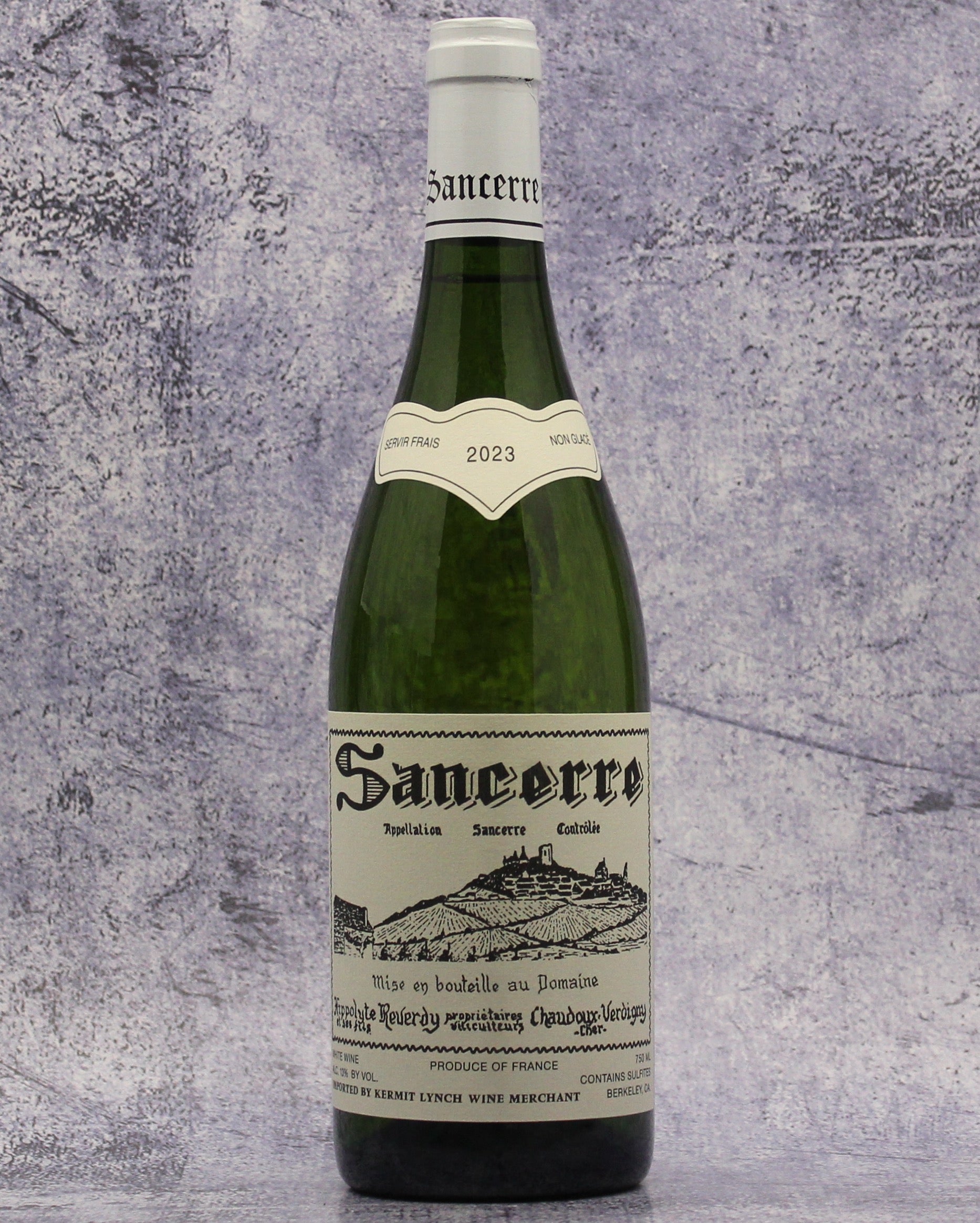From: Loire, France
Blend: Sauvignon Blanc
Taste: This release stands head and shoulders above textbook Loire Valley Sauvignon Blancs, offering bright acidity, hints of smoke, citrus, and grassiness. Its stony and fresh character evokes notes of lime, fennel, and dill, tinged with subtly chalky, saline, and iodine-like nuances, leading to a finish that combines intrigue, refreshment, and mouthwatering savor.
Pairing: Sancerre Blanc is best served at a temperature of 8 to 10°C, making it an ideal companion for fish and seafood. It also complements the local specialty, Crottin de Chavignol goat cheese. This versatile wine can elevate various dishes, from fish and shellfish to gently spiced hot dishes. It can even serve as a delightful aperitif.
As Kermit Lynch beautifully puts it, "Very pure Sancerre aroma, generous, fresh, without grassy edges." The palate is expansive yet balanced, with a dry, lip-smacking finish that leaves a fresh, lemony whisper on your lips, making it a perfect complement to simple fish dishes.
What’s more simple and classic than pairing this Sancerre with a quintessential French classic - goat cheese!
Marinated Goat Cheese
By Martha Rose Shulman
About. The Reverdy family has been crafting wines for generations in the charming village of Verdigny, nestled within the picturesque commune of Sancerre in the eastern Loire. A tale that might stretch as far back as the 1600s, this family's journey through viticulture is a story of tradition, evolution, and unwavering commitment to the land. Today, the name Hippolyte Reverdy is synonymous with excellence, and their 2022 Sancerre is a testament to their steadfast dedication.
The Reverdy family's journey in winemaking traces its roots to a time when the farm was a mosaic of crops, goats roamed the land, and wine was a humble offering for local consumption. In the aftermath of World War II, Hippolyte Reverdy embarked on a path of increasing Sauvignon Blanc and Pinot Noir production, meeting the burgeoning demand from the bustling streets of Paris. As time passed, his three sons joined him in this labor of love, bottling small quantities of wine under their labels while selling the lion's share of their grapes to the local cooperative.
In 1971, Michel Reverdy, one of Hippolyte's sons, stepped into the family legacy, and a few years later, Kermit Lynch became part of the story. The passing of Michel's father and the untimely loss of his two brothers cast a shadow over the domain, but Michel persevered. He found his rhythm, expanded the winery to create remarkable red wines, and transformed the estate. Today, Michel Reverdy tends to fourteen hectares of vineyards with the dedication of a true paysan, working tirelessly seven days a week, his life dedicated to the land.
Kermit Lynch, who has been closely associated with Domaine Hippolyte Reverdy, reflects on the transformation: "Reverdy has since become the benchmark domaine of our day." This benchmark status is no small feat and speaks volumes about the quality of the wines that emanate from this estate.
The vineyards of Sancerre have a storied history that dates back to the 12th century when Augustine monks played a pivotal role in their development. Proximity to the Loire River was essential for transportation at the time, and Sancerre wines earned royal recognition, finding mentions in official edicts. In the late 19th century, Sauvignon Blanc became the star of Sancerre, leading to the AOC designation for white, red, and rosé wines.
Sancerre's vineyards encompass approximately 2,800 hectares, spanning across 14 communes. Domaine Hippolyte Reverdy's vines thrive on two distinct types of soil: the "white soils,” with limestone-clay compositions that produce robust, slow-aging wines, and the "pebbly soils," which are limestone-based and stony, resulting in wines that evolve quickly into fruit-forward delights. The intelligent blending of these terroirs is a defining characteristic of Domaine Hippolyte Reverdy wines.
Michel Reverdy's meticulous approach to winemaking reflects his commitment to crafting exceptional wines. The vines are trained in the Guyot style, with Michel managing 20 different vineyard parcels spread over 14 hectares. Sustainability guides his farming practices, emphasizing minimal treatments to maintain the land's health.
Harvesting typically takes place between September 15th and October 5th, a crucial period that determines the character of the wines. The Sancerre Blanc grapes undergo gentle pressing using a pneumatic press immediately following harvest. The must settles for 36 hours before clear juice is racked and fermented in temperature-controlled stainless steel cuves. The wine rests on its lees for 2-3 months, stirred several times to keep the lees suspended throughout the liquid. Bottling occurs in the spring, around Easter, preserving the wine's essential qualities.
Upon pouring a 2022 Hippolyte Reverdy Sancerre Blanc glass, one is greeted by intense scents of white fruits, with pear and peach leading the aromatic dance. The palate mirrors this balance between sweetness and fine acidity, creating a harmonious Sancerre as delightful as elegant.

